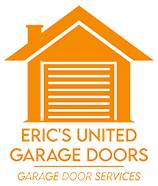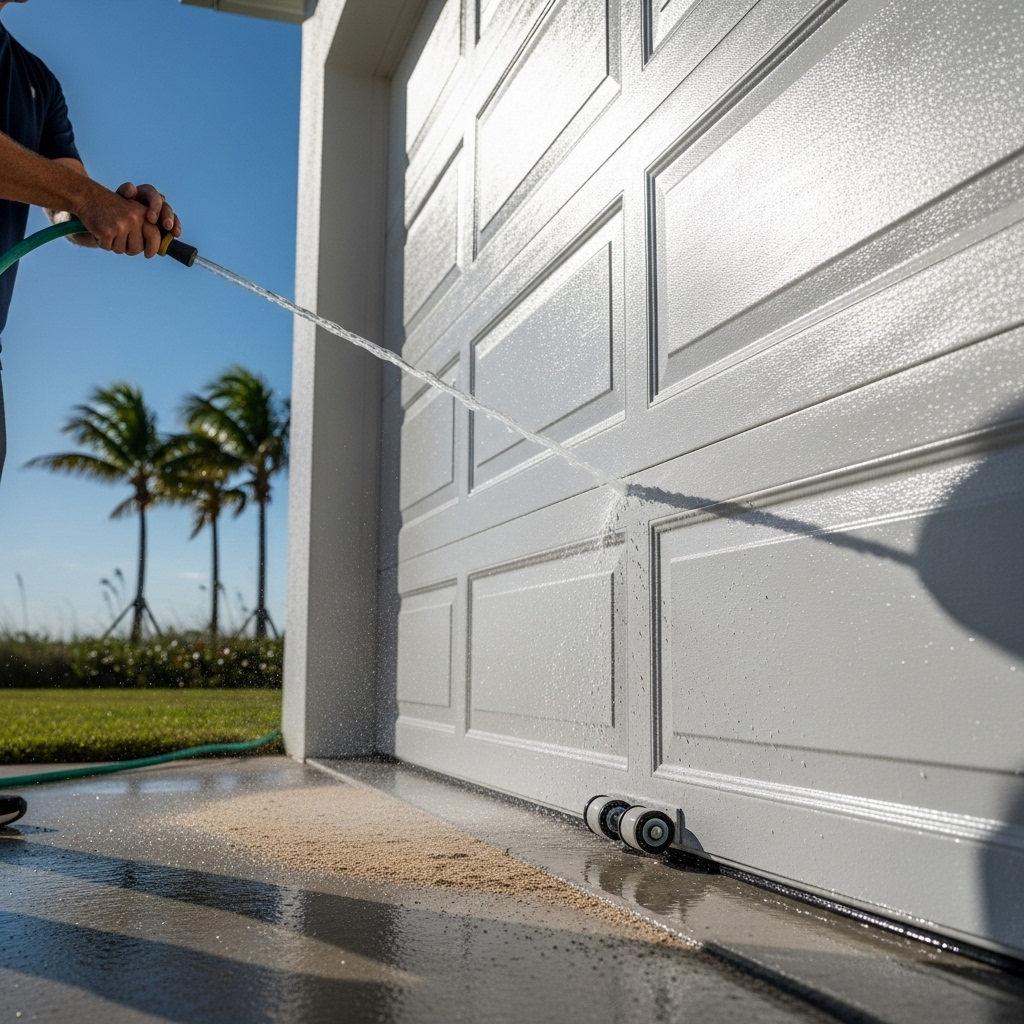Introduction: The Coastal Climate Challenge
Coastal Florida offers ocean views, sea breezes, and a lifestyle built around the water—along with constant exposure to salt, humidity, sand, and sun that punish garage doors. These conditions accelerate corrosion, dry out weather seals, and amplify operational noise. A reliable maintenance plan must address salt management, protective coatings, targeted lubrication, and frequent inspections. Whether your home sits on the beach or a few miles inland, sea spray and high humidity still circulate through the neighborhood. The most effective strategy combines homeowner routines with scheduled professional checkups. Start by committing to a coastal-specific plan and, if you prefer additional assurance, schedule periodic garage door maintenance to catch small issues before they become major repairs.
This guide breaks down the routine into manageable tasks: weekly fresh-water rinses when winds carry salt inland, monthly lubrication and safety checks, quarterly deep cleanings, and pre-storm preparations. You will learn how to spot early corrosion, select materials that resist salt damage, and keep your door quiet and safe in a demanding marine environment.
Why Salt Air Changes Everything
Salt particles act like microscopic corrosion accelerators. They penetrate paint weaknesses, cling to fasteners, and settle inside hinges and bearings, especially when paired with humidity that keeps surfaces damp. Over time, you see flaking paint, stained edges, frozen rollers, and seized bearings. The goal is to interrupt this cycle: rinse away salt before it accumulates, maintain a clean protective film on vulnerable metal, and use components designed to resist rust. Even if your door is aluminum or has a durable coating, the hardware—hinges, rollers, shafts, and drums—often contains steel. These are the parts that need special attention on the coast.
Weekly and After-Storm Rinse Routine
When onshore winds are strong, plan a quick rinse at the end of the day or week. Use a hose to gently flush the exterior panels, the perimeter seals, and visible hardware. Avoid high-pressure nozzles that force salt deeper into seams. Lift the door slightly and rinse the lower edge and bottom seal to remove sand. After major storms or days with heavy spray, also rinse the inside hardware. Dry with a soft towel where practical, especially on fasteners, hinges, and exposed shaft sections. Regular rinsing keeps salt crystals from sitting for days and drawing moisture from the air to feed corrosion.
Monthly Inspection and Lubrication—Coastal Edition
Open and close the door while listening for new squeaks or grinding; these sounds often signal salt contamination in bearings or hinges. Inspect hinges for rust at pivot points and along the knuckles. For rollers, look closely at the bearings: nylon rollers with sealed bearings are best, but even sealed units can degrade if salt penetrates. Replace any roller that wobbles or drags. Wipe tracks with a dry cloth; do not lubricate the track channel. Apply a light, marine-appropriate lubricant to hinge pins and roller bearings, then wipe the excess. Treat exposed metal—including the torsion shaft ends, fastener heads, and bracket edges—with a thin anti-corrosion film. Keep the application controlled; a little goes a long way in humid air.
Protecting Weather Seals and Paint Finishes
Sun and salt are tough on rubber and paint. Clean the bottom seal and perimeter seals monthly with mild soap and water, then apply a silicone conditioner to preserve flexibility. If seals flatten, crack, or pull away from the door, replace them promptly. For painted or coated doors, inspect edges and seams for chips or scratches. Touch up small defects quickly to prevent salt intrusion beneath the coating. On metal doors, watch for early rust at crimped edges and around fasteners. Once corrosion starts, it tends to spread faster in coastal environments, so early intervention is key.
Hardware Choices That Pay Off Near the Ocean
When components need replacement, choose corrosion-resistant options. Stainless steel or hot-dip galvanized fasteners, sealed-nylon rollers with stainless stems, and powder-coated or galvanized hinges handle salty air better than standard steel. Consider end-bearing plates and center bearings designed for harsh environments. If your opener uses a chain, keep it protected with light lubricant per the manufacturer’s guidance; belt-drive openers are popular because they are quiet, and the belt resists corrosion. If you switch rollers, select a high-quality sealed bearing to keep salt out and minimize maintenance between lubrication cycles.
Track Alignment and Bracing in Coastal Winds
High winds can rack the door or shift track alignment, especially if bracket fasteners loosen in soft or saturated framing. Inspect vertical tracks for plumb and ensure brackets are tight. Check horizontal tracks for level and for proper backhang support. A door that binds near the top or scrapes along a section of track may be out of alignment. Do not bend tracks with force; instead, loosen the appropriate fasteners, gently realign, and retighten. Reinforcement struts across the door sections are important in windy regions; make sure they remain straight and firmly attached to prevent panel flex under pressure.
Opener Reliability in a Marine Environment
Humidity and salt can sneak into electronics. Keep opener housings closed and wipe dust or salt residue off the case and rail. Verify the header bracket and ceiling supports are solid; if the opener vibrates or the rail flexes, the added movement can accelerate wear. Test safety reversal monthly, and verify photo-eyes are clean and aligned. Sun glare off water can cause nuisance trips, so add shading or reposition sensors slightly if your garage faces reflective surfaces in the afternoon.
Midyear Deep Clean and Protective Treatment
At least twice a year, perform a deeper service. Remove surface rust with a non-scratch pad and treat bare metal promptly. Detach and inspect rollers for smooth rotation; replace those with rough bearings or ovalized wheels. Assess the condition of the torsion spring and drums for pitting. Reapply protective film to exposed hardware and inspect seals for flexibility. Evaluate your paint or coating and consider a gentle wax on compatible finishes to provide an additional barrier against salt. This midyear reset is a perfect time to coordinate with local experts who know how marine air affects doors, balancing DIY care with periodic expert evaluation for overall system health.
If you prefer to supplement your routine with professional oversight—especially for spring balance, bearing health, and precise opener calibration—schedule a visit with trusted garage door maintenance to confirm alignment, evaluate corrosion risk, and document recommendations specific to your block, exposure, and door model. Combining your regular rinses and lubrication with a trained eye provides strong protection for your investment.
Signs It’s Time to Replace Components
Replace rollers if they wobble, squeal persistently after lubrication, or show cracked nylon. Swap hinges that have elongated holes or cracked knuckles. Exchange fasteners that exhibit deep rust or rounded heads. If cables show frayed strands or crushed sections near the drums or bottom brackets, stop using the door and call a professional. These parts bear the door’s weight, and failure can be dangerous. Likewise, if the door refuses to stay balanced when disconnected from the opener, spring repair or replacement is necessary and should not be attempted as a DIY task.
Storm Preparation for Coastal Homes
Confirm your garage door’s wind rating complies with your local code. Ensure reinforcement struts are intact and brace hardware is present and functional. Test the manual release so you can operate the door without power. Store removable bracing hardware in a labeled container. After a storm, rinse the door and hardware thoroughly with fresh water to remove salt and debris, then re-lubricate pivot points once dry. Inspect tracks, brackets, and panels for bends and correct them promptly before routine operation resumes.
Moisture Control Inside the Garage
Reducing interior humidity protects electronics and metal surfaces. Promote airflow with vents, fans, or a dehumidifier. Keep the garage clean and uncluttered so air can circulate around the door and opener. If you store beach gear, rinse and dry it outdoors to avoid salt buildup near the door mechanisms. Consider floor mats near the threshold to catch sand that would otherwise grind into the bottom seal.
Frequently Asked Questions
Q: How often should I rinse my garage door near the beach? A: Rinse whenever winds carry visible spray or salty dust, often weekly. After storms, rinse immediately once it is safe.
Q: What lubrication is best for coastal environments? A: A light, non-detergent, garage-door-specific lubricant for hinges and bearings, combined with silicone for weather seals. Avoid heavy grease that traps sand.
Q: Can I slow rust on existing hardware? A: Yes, remove loose rust with a non-scratch pad and apply a thin anti-corrosion film. Replace heavily pitted parts to restore strength and smooth motion.
Q: Do nylon rollers hold up near the ocean? A: High-quality sealed-nylon rollers with stainless stems perform very well and stay quieter than open-bearing steel rollers in coastal conditions.
Q: Why does my door get louder after windy days? A: Salt and sand can infiltrate bearings and hinges, increasing friction. Rinse, re-lubricate, and inspect for pitting or wear.
Q: Should I lubricate the tracks? A: No. Keep tracks clean and dry. Lubrication inside the channel attracts grit and causes binding.
Q: How do I protect photo-eyes from sun glare? A: Slightly angle or shade the sensors and keep lenses clean. Realign if indicator lights blink or flash in afternoon sun.
Take Control of Coastal Wear and Tear
The key to coastal reliability is consistency: rinse regularly, lubricate lightly, protect exposed metal, and verify safety features each month. For balance checks, bearing health, and calibration that demand an expert touch, book trusted garage door maintenance and enjoy a door that stays smooth, quiet, and ready for every sea breeze.

